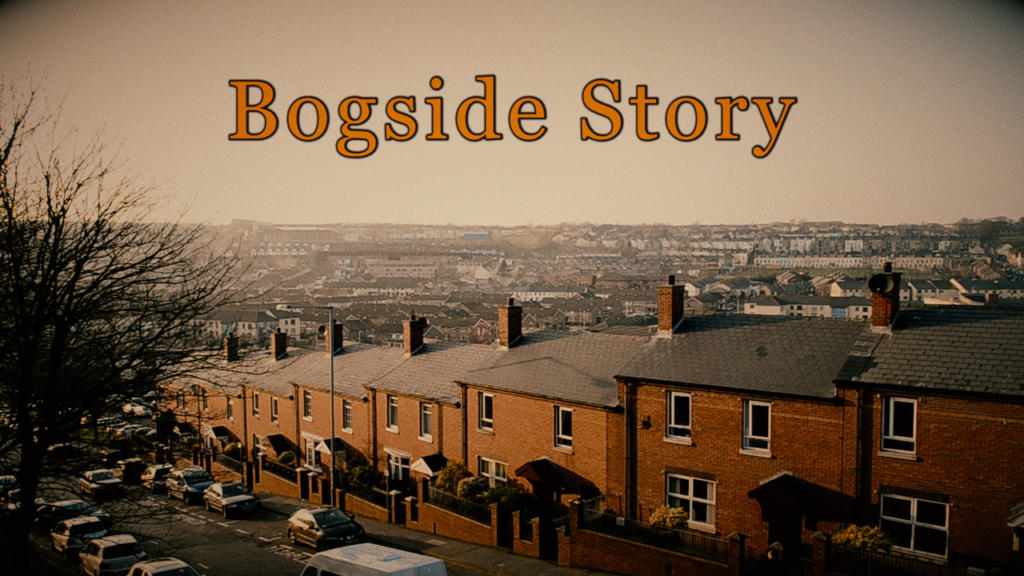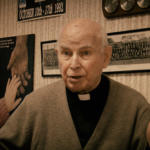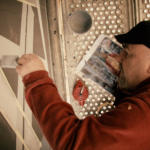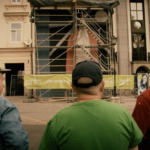“Sunday Bloody Sunday” intoned Bono in 1983, echoing the infamous Sunday of Blood on January 30, 1972, in Derry, when the British army opened fire on a peaceful demonstration for civil rights, killing fourteen people all disarmed. Today in the district of Bogside, in Derry, no one has forgotten and everything is still alive thanks to the expressive power of numerous murals that cover walls and houses, to leave an indelible mark, not to forget. The art always says its own and never late in appointments with history, we remember it “Bogside Story”, a precious and necessary document, an emotional reconstruction of facts between history, art and politics, capable of renewing a sense of solidarity and respect for different identities.
It is January 30, 1972, when a peaceful civil rights demonstration in Derry, Northern Ireland, is brutally silenced by the British army, which cold kills fourteen people including six minors, in what will go down in history as Bloody Sunday , Sunday of Blood.
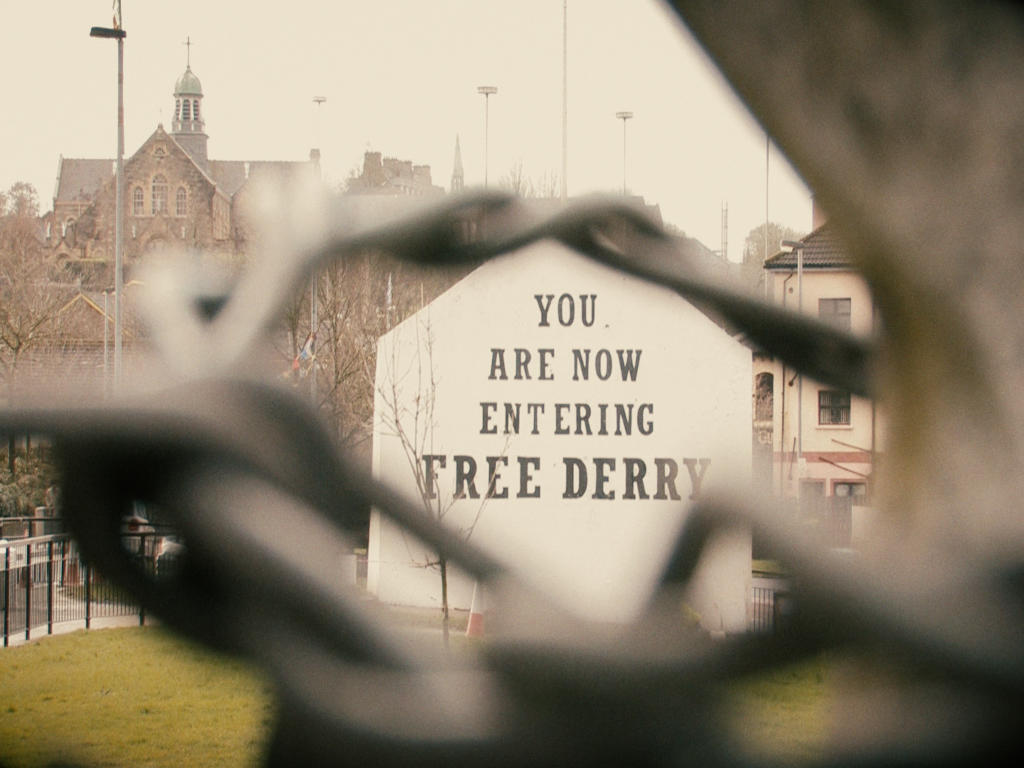 Forty five years later, the journalist Fulvio Grimaldi – the only Italian photojournalist to document the peaceful Marcia culminating in massacre – returns to Ireland to testify to the third investigation into the events of Derry. Here no one has forgotten, everything is still as fresh as paint in the mind and in the streets of Bogside, the key district of Bloody Sunday, thanks to the expressive power of numerous murals that cover buildings, walls, houses. One work in particular captures the attention of Fulvio Grimaldi, the mural depicting one of his most famous shots, which became an icon of the Sunday of Blood. Just that image, inserted in a real “street gallery” – which tells the most significant events of recent history in Northern Ireland, immortalizes all the lives broken, the slogans shouted loudly, the characters who have distinguished themselves during the history, to leave an indelible mark and not forget – it will be an opportunity to meet the photojournalist and the creators of the works, the Bogside Artists, a group of artists made up of brothers William and Tom Kelly and Kevin Hasson.
Forty five years later, the journalist Fulvio Grimaldi – the only Italian photojournalist to document the peaceful Marcia culminating in massacre – returns to Ireland to testify to the third investigation into the events of Derry. Here no one has forgotten, everything is still as fresh as paint in the mind and in the streets of Bogside, the key district of Bloody Sunday, thanks to the expressive power of numerous murals that cover buildings, walls, houses. One work in particular captures the attention of Fulvio Grimaldi, the mural depicting one of his most famous shots, which became an icon of the Sunday of Blood. Just that image, inserted in a real “street gallery” – which tells the most significant events of recent history in Northern Ireland, immortalizes all the lives broken, the slogans shouted loudly, the characters who have distinguished themselves during the history, to leave an indelible mark and not forget – it will be an opportunity to meet the photojournalist and the creators of the works, the Bogside Artists, a group of artists made up of brothers William and Tom Kelly and Kevin Hasson.
TRAILER
Their testimonies and opinions, together with those of the late Father Edward Daly, who tried to save the community during the bloody day, and of the Nobel Prize winner John Hume, a figure of great political commitment and architect of the peace process for Northern Ireland, make “Bogside Story” a precious and necessary document, an exciting story between history, art and politics, capable of renewing a sense of solidarity and respect for different identities.
Written and directed by Rocco Forte and produced by Megapixell by Pietro Laino, “Bogside Story” is released in theaters on Thursday 20 September 2018 with Independent Distribution
BOGSIDE STORY | CAST & CREDITSDirection and screenplay: Rocco Forte
With: Fulvio Grimaldi and The Bogside Artists: William Kelly, Tom Kelly, Kevin Hasson and with Father Edward Daly, John Hume, Michelle Walker, Betty Walker, Linda Nash
Video operator and Director of Photography: Pietro Laino
Editing: Pietro Laino, Rocco Forte
Music: The Bloody Irish Boy
Sound engineer in direct connection: Luca De Francesco
Sound and post-production mix: Megapixell s.r.l.s.
Assistant director and executive production: Francesco Abonante
Production assistants: Simone De Marco, Luciano Pisani
Assistant operator: Francesca Laino
Edition secretary: Elvira Fortuna
Subtitles: Ona Mitkevicious – Caterina Detti
Photograph: Chiara Lucà Trombetta
Inspections: Domenica Uricchio
Graphics: Elena Forte
Historical consultant: Francesco Gallo
Images and archive videos: GettyImages, Fulvio Grimaldi, The Bogside Artists
Manufactured by: Megapixell s.r.l.s.
Country: Italy, 2017
Genre: Documentary
Duration: 75 minutes
Hall exit: Thursday 20 September 2018
BOGSIDE STORY | SYNOPSIS
The influential journalist Fulvio Grimaldi – the only Italian photojournalist to document the peaceful civil rights march of January 30, 1972, in Derry, culminating in the bloody massacre known as Bloody Sunday – back in Northern Ireland, forty-five years later, to testify at the third Bloody Sunday investigation. Once in Derry, he discovers that on the outer walls of the houses of the Bogside – the most important Catholic quarter of the city – are paintings of murals that tell the most significant events of recent history in Northern Ireland. Fascinated by the communicative power of the works, one of which was inspired by one of his photography, which became an icon of the Sunday of Blood, Fulvio came into contact with the Bogside Artists, the authors of the murals, and with the people who were involved in the painted events. A journey between past and present imbued with art, history and deep emotions; the meetings, memories and testimonies determine a dramatic immersion in the reality of that place and tell its story: Bogside Story.
BOGSIDE STORY | DIRECTOR
Rocco Forte, for friends Ricky, is an author of Calabrian origins, born in Saracena in the province of Cosenza. His passion for cinema has inspired him since he was a child, thanks to the first vision of a film in the darkness of the cinema, that film was “Jurassic Park”. After scientific maturity he says no to mathematics and chooses a humanistic education: he moved to Rome and began a course of artistic-literary studies at the University of Roma Tre, which led him to specialize in studies on cinema and audiovisual and at the same time allows the first work experience on film sets. From the curiosity to know places and new people born his second passion, travel, and just in one of the innumerable trips he comes across the murals of Derry, which push him to realize his first work, the documentary “Bogside Story”.
BOGSIDE STORY | DIRECTOR’S NOTES
The documentary focuses on the phenomenon of murals “that enrich and embellish, making it acquire historical importance” the city of Derry in Northern Ireland. The idea was born from a trip to Ireland, thanks to which I discovered the existence of these murals: the emotional reaction that aroused in me, their beauty and power, as tools of sociopolitical communication and contemporary art, pushed to create “Bogside Story”.
The conflict in Northern Ireland is often referred to as “Irish terrorism” and rarely as a struggle for national liberation. The struggle in Northern Ireland goes beyond the acts of violence represented in the international media. Among the countless civil actions that have followed, the most fascinating, which must be taken into account and memory, is the phenomenon of the murals of the Bogside. Three artists (William Kelly, Tom Kelly and Kevin Hasson), armed only with color cans and brushes, used the large walls of the buildings of the neighborhood as if they were their canvases. The works of art that were born, on what is referred to as the “People’s Gallery”, break the silence and penetrate the historical consciousness on the events that happened in the Bogside, to ensure their memory as well as a sort of social justice.
Narrator of excellence on the tragic day of the Sunday of Blood, Fulvio Grimaldi, who instead of telling through his shots a peaceful march for civil rights in Free Derry has found himself uncomfortable witness to a social and political disaster. One of his photos has become the mural with which the artists do not want to forget the incident.
To give one of his last testimonies, the late Father Edward Daly, the one who in the front line tried to save the community during the bloody day. He is also joined by the precious opinion of the Nobel laureate John Hume, who thanks to his political commitment is the author and the most representative figure of the peace process for Northern Ireland.
The story of Derry, the history of the events that occurred in the Bogside district – remembered by these incredible murals, deepened and embellished by the testimonies, mostly unpublished, of those who lived them and by the artists themselves – is an experience that every person should have the opportunity to know and disclose. For this reason it was decided to create the documentary, to start a search for the soul and the collective consciousness on a community with a heavy history of discrimination, so that every viewer can move away, after the vision, with a renewed sense of solidarity and greater respect for different identities. [Rocco Forte]
BOGSIDE STORY | PRODUCTION
Megapixell s.r.l.s. di Pietro Laino is an independent company that for years has been actively working as production, service, executive production for national and foreign partners in the field of audiovisual and stereoscopic 3D. The company is aimed at companies that want to consolidate their image and promote their services and small businesses that want to emerge exploiting the potential offered by new media, providing high quality promotional services.
Being able to count on a high level technical material of his property, Megapixell aims to take care of all the phases of the entire production cycle: from the conception to the realization of the finished product, as audiovisual broadcast for advertising, short films, documentaries, digital films, music videos, corporate, institutional, cultural, journalistic, naturalistic and sporting. Among all, “Bogside Story” is an example.
BOGSIDE STORY | PRODUCTION NOTES
The productive effort for the realization of “Bogside Story” was important. The will and the need to be present on site to collect the interviews required more expeditions and departures. The period that was privileged to follow was just that close to the day of commemoration for the victims of Bloody Sunday: the first time we focused on collecting the testimonies of the protagonists of the murals and the story of the artists, the second on the memory of Fulvio Grimaldi and the meeting with the Bogside Artists, in front of the mural portraying his iconic photo shoot. On both occasions it was possible to document the march that takes place every year throughout the Bogside to finish in front of the monument in memory of the victims.
There was also the possibility to follow the artists during the construction of their mural in Maribor, Slovenia. An important occasion, thanks to which you can better understand the process of creation and realization of the Bogside Artists. The mural, made public in the presence of the Dalai Lama, depicts a Tibetan monk in meditation.
The documentary is aimed at a heterogeneous public, of all ages and with all kinds of interests, such as fans of history and politics, art and photography.
Most of the footage, about eight hours, was filmed using high definition digital broadcast camcorders and direct audio with radio microphones, boom and multitrack recorder. The entire post-production was realized in the studios of the Megapixell in Rome with software and digital editing stations, so that the final product can be supported and reproduced on all the new generation platforms.
“Bogside Story”, in addition to its 75-minute theatrical version, is also available in a reduced 52-minute version. [Pietro Laino]
BOGSIDE STORY | THE ARTISTIC CAST
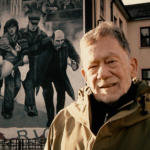 Fulvio Grimaldi
Fulvio Grimaldi
Journalist, writer, television host and Italian documentary filmmaker, Fulvio Grimaldi was born in Florence on May 12, 1934. During his forty career years he worked for the radio (BBC in London), for various newspapers such as “Paese Sera” “,” Days: New Routes “,” Abc “,” Lotta continua “and from 1986 to the RAI, especially as a war correspondent. In March 1999, in controversy over the war on Yugoslavia, he left state television and moved to “Liberazione”, the newspaper of Rifondazione Comunista. Here he managed a section called “Mondocane” until he was dismissed from the newspaper in May 2003, undergoing a dismissal due to political conflicts, having found himself in disagreement with the party line regarding some international issues. He then worked on the self-production of video-documentaries on the environment, global crises and wars, thus dealing with international politics.
He was the only Italian witness to the 1972 Derry massacre, known as Bloody Sunday, which he was able to document widely with his photographs, one of which later became the iconic image of the Sunday of Blood.

The Bogside Artists
Trio of muralists from the city of Derry, Northern Ireland, composed of the brothers Tom and William Kelly and Kevin Hasson. The group was formed in the early 90s with the intent to tell, through the art of murals, the main events of the Northern Ireland conflict.
From 1994 to 2008 they painted on the outer walls of the houses of the Bogside a series of twelve murals depicting the struggle for civil rights, the Battle of the Bogside and the Bloody Sunday, called The People’s Gallery. It runs the full length of Rossville Street, which runs through the center of the Bogside, the main Catholic quarter of the city of Derry. It is a real outdoor art gallery, unique in the world, dedicated to people who have lived through events.
Although their work has never been promoted by the local council, the Bogside Artists have achieved international fame by exhibiting their work in various cities around the world: Boston, Sydney, Brisbane, Chicago, London and Washington D.C. They painted other murals outside the walls of Derry, including the mural dedicated to Martin Luther King Jr. in Washington D.C. In September 2011, they painted a mural for the city of Vordernberg, Austria, on the controversial theme of the New World Order. The following year in Slovenia for Maribor, European Capital of Culture, they created a mural dedicated to the Tibetan people inaugurated by the Dalai Lama.
In addition to the work of muralists, the Bogside Artists have over the years played numerous art workshops together with Catholic and Protestant children, in order to promote reconciliation between the two communities. Tireless as always, they are currently engaged in promoting their art and their message around the world through a traveling exhibition of their works.
Edward Kevin Daly
 Belleek, December 5, 1933 – Derry, August 8, 2016. He was an Irish Catholic bishop. After studying at St. Columb’s College in Derry, he left for Rome where he attended the Pontifical Irish College. He was ordained a priest on March 16, 1957 for the diocese of Derry, and from 1962 to 1973 he was in service in the Cathedral of Sant’Eugenio, located in the Bogside district, one of the main theaters of confrontation of the Northern Ireland conflict.
Belleek, December 5, 1933 – Derry, August 8, 2016. He was an Irish Catholic bishop. After studying at St. Columb’s College in Derry, he left for Rome where he attended the Pontifical Irish College. He was ordained a priest on March 16, 1957 for the diocese of Derry, and from 1962 to 1973 he was in service in the Cathedral of Sant’Eugenio, located in the Bogside district, one of the main theaters of confrontation of the Northern Ireland conflict.
While in Bogside he took part in the civil rights marches, he personally witnessed the 1969 Bogside battle and the 1972 Bloody Sunday: the image of Father Daly waving a white handkerchief while trying to rescue Jackie Duddy , wounded to death, has become famous all over the world.
On 31 March 1974 he was consecrated bishop by cardinal William John Conway: he chose as his motto the phrase “Pasce oves meas”, or “Pasci le mie sheep”, and as emblem an oak tree with a dove, to symbolize the desire that flourish peace and reinforce faith in his diocese.
He was entrusted with the diocese of Derry, who ruled until October 1993 when a stroke forced him to resign. He then became a chaplain at the Foyle hospital center. He died in Derry on 8 August 2016. The solemn funeral, presided over by Msgr. Donald McKeown, took place on the afternoon of August 11 in the Cathedral of Sant’Eugenio.
John Hume
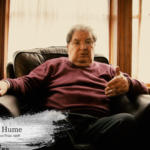 Born in Derry on January 18, 1937, John Hume is a world-famous Northern Irish politician, considered one of the most important figures in the recent history of Northern Ireland and one of the main architects of building the peace process in this region.
Born in Derry on January 18, 1937, John Hume is a world-famous Northern Irish politician, considered one of the most important figures in the recent history of Northern Ireland and one of the main architects of building the peace process in this region.
Founder and leader of the Social Democratic and Labor Party (SDLP), in 1998 he received, together with David Trimble, the Nobel Peace Prize with the following motivation: “For their commitment to the peace agreement for Northern Ireland and the their effort to find a political solution in the tormented province “.
In addition to the Nobel Prize, he was awarded two other prestigious international awards on the theme of peace: the Gandhi award and the Martin Luther King award. Moreover, having been awarded the honorary citizenship of Palermo, appears to be the first Palermo to have received the Nobel Peace Prize.
 The Bloody Irish Boys
The Bloody Irish Boys
They call themselves a group of drinkers with a serious music problem. The US band with clear Irish origins was formed in 2003 in Columbus, Ohio by the frontman and founder Shayne.
The desire to preserve the sound of their origins and pay homage to the artists who preceded them is very evident since their debut album, “Drunk Rock” (2005), which contains many original pieces in which the Irish tradition is condensed, bluegrass, punk and metal. Thanks to this original mix the band has created a unique and intense sound that has reinvented the folk genre hand in hand with punk. In St. Patrick’s Day 2011 they released their second album entitled “Auld St. Patrick”. In 2017 they edited the soundtrack of the documentary “Bogside Story”.

Iggy Poppins is a Freelance Journalist, Photographer, Videomaker, wiriter and a little bit artist. The nickname was born casually…

